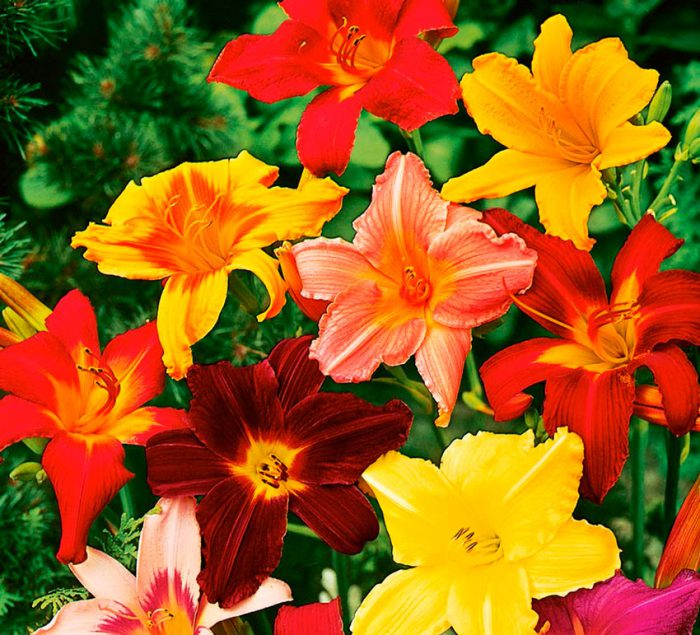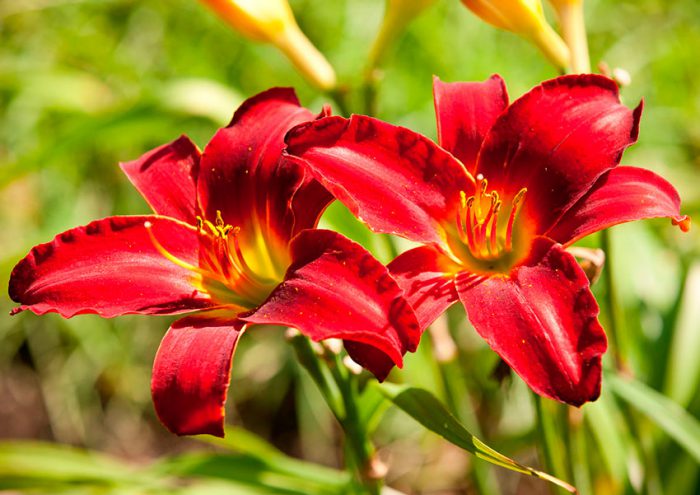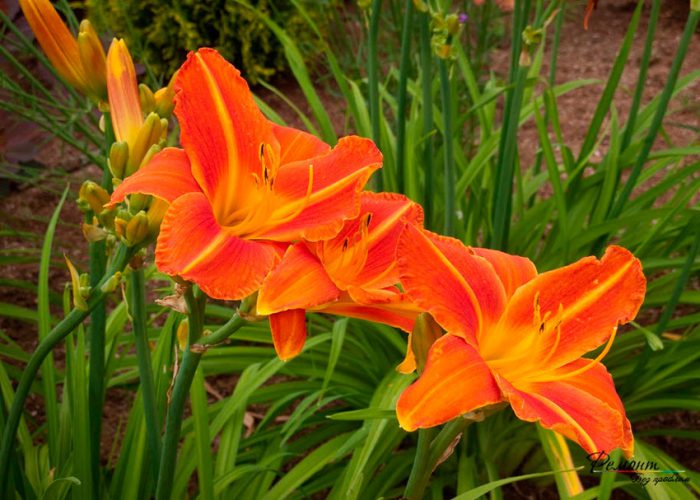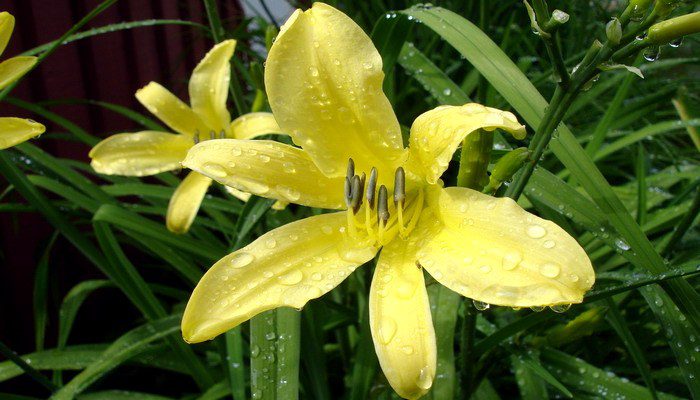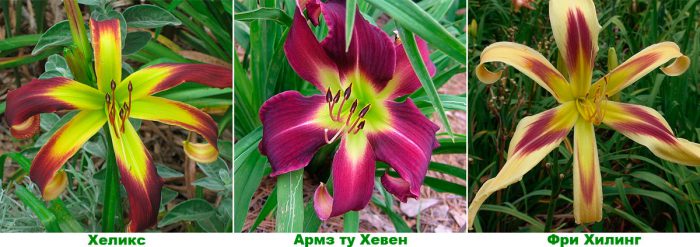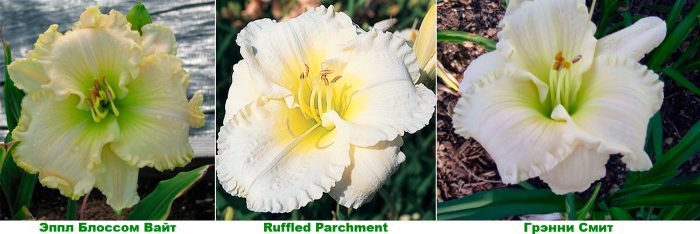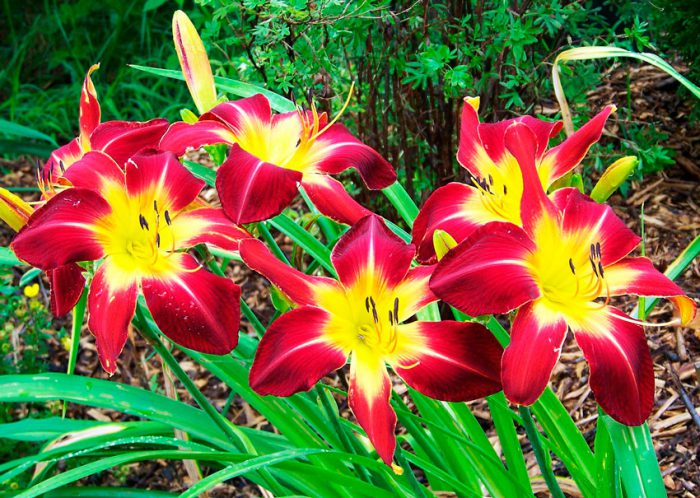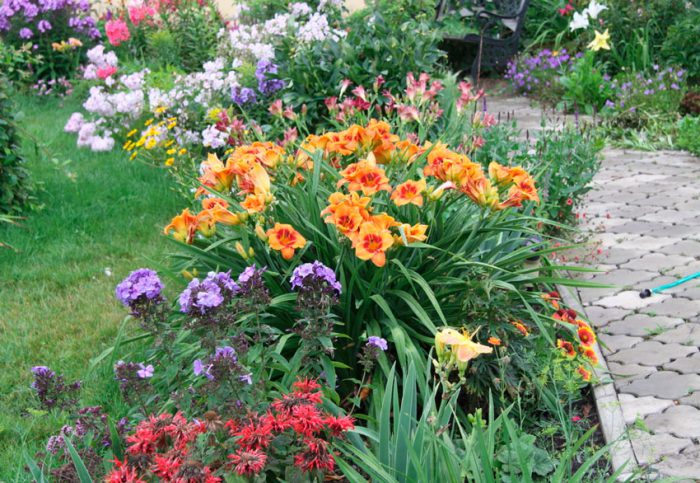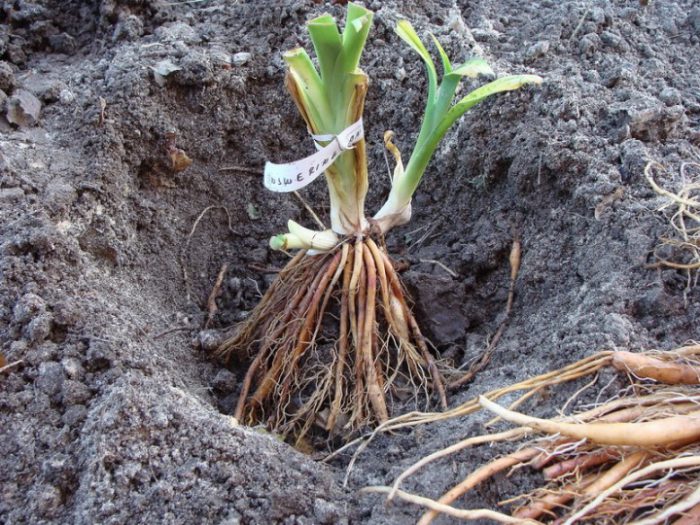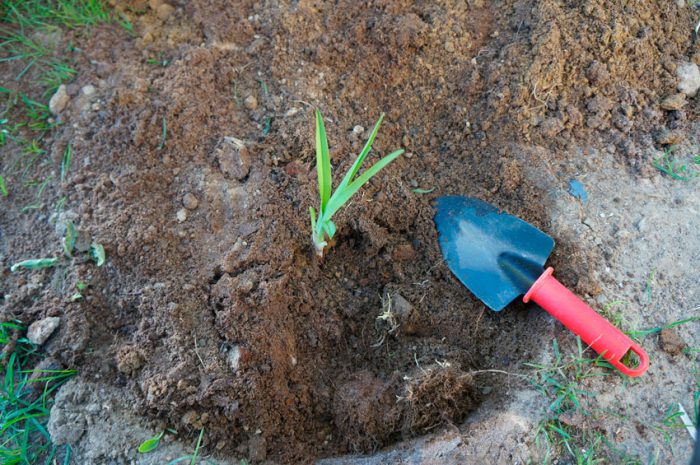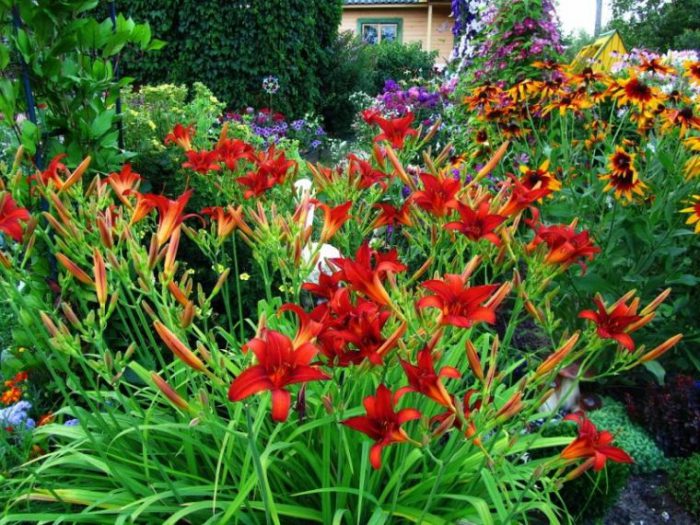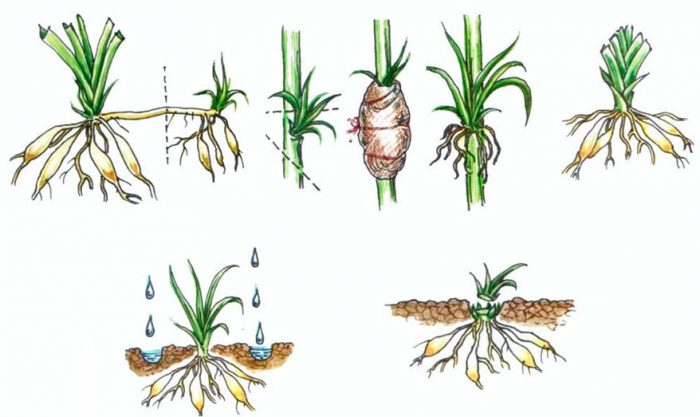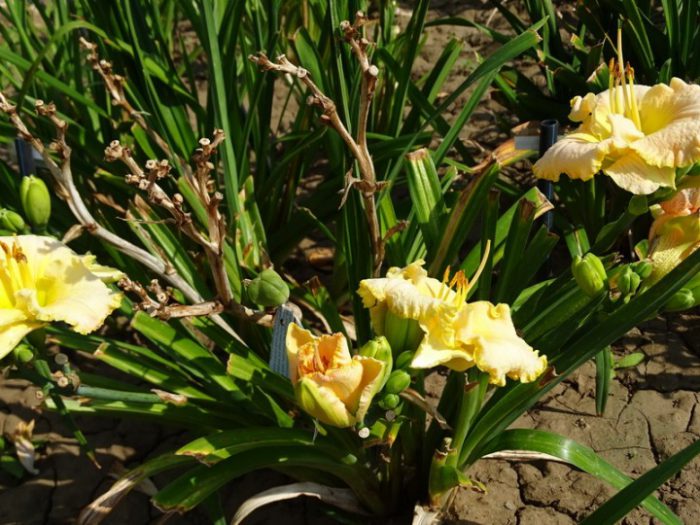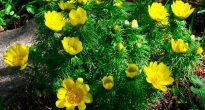Such a perennial herb like daylily (Hemerocallis), which is also called krasodnev, belongs to the subfamily of the daylily family of the Xantorrhea family. It comes from East Asia. Mankind has known such a plant for a very long time, but for the first time they started talking about it in science only in 1753. K. Linnaeus called this flower "hemerocallis", this name includes 2 Greek words "hemera" - "day, day" and "callos " - "beauty". In Russia, this flower is called krasodnev, which means beauty that lives only one day. Quite spectacular are not only those species and varieties of daylily that are cultural, but also those that grow in the wild. You should also know that such a flower is very undemanding to care for, and it is often called the plant of a lazy gardener, but this statement is true only for old varieties. For the past few years, this plant has been very fashionable and all this thanks to the efforts of breeders from Australia and America. New varieties are no longer so unpretentious, but they are much more beautiful than the old ones.
Content
Daylily features
The daylily has filamentous, most often thick and fleshy adventitious roots, which are designed to save the plant during a dry period. Broad-linear basal two-row leaf plates can be straight or arcuate curved. Large, six-part flowers, usually funnel-shaped, colored yellow, orange or brownish red. The inflorescences consist of several flowers. No more than three flowers can bloom at the same time, the flowering duration is more than 20 days. On a bush there can be either 1 or several leafy peduncles, the length of which, depending on the variety, can vary from 0.3 to 1 meter (sometimes even higher). The fruit is a triangular box with seeds inside. Gardeners cultivate both natural species and a large number of cultivars and forms.
Types and varieties of daylily with photos and names
Natural species
Natural species of daylily absolutely all have a spectacular appearance, which is why they are so popular among gardeners. And also such flowers are distinguished by their undemanding care and unpretentiousness.Also, such plants are resistant to diseases and harmful insects, they are drought-resistant and perfectly tolerate waterlogging, and these flowers are also durable. The most popular types are: red daylily, lemon yellow, yellow, Du Maurier and Middendorf. Description of several natural species:
Daylily orange
Sharply curved dark green rigid leaf plates reach 30 mm in width. The height of the peduncles branched in the upper part is about 100 centimeters. The diameter of the asymmetrical flowers is about 12 centimeters, in the middle they are orange with a brownish-reddish tint, they have no smell. Bloom is observed in July. Cultivated since 1890.
Daylily lemon yellow
This kind can be found in nature only in the territory of Central China. The flower shape is very similar to the white lily, differs in night flowering. The height of the bush is about 0.8–0.9 m. Tall peduncles branch in the upper part. The flowers have a pleasant and strong scent, they reach 14 centimeters in length and 12 centimeters in width. Flowering is observed in the second half of the summer period and has a duration of about 40 days.
Daylily Dumortier (wolf locust)
In nature, it can be found in Japan, the Far East, Northeast China and Korea. The height of the compact bush is about 0.7 m. The width of the rich green leaf blades is about 20-25 mm. Peduncles are located at the level of leaf plates. Dense inflorescences consist of 2-4 wide open orange-yellowish flowers. in diameter reaching 5 centimeters. This type is often used by breeders in their work. Cultivated since 1830.
Daylily garden, or hybrid daylily
This is a generalized name for hybrid varieties, today there are more than 60 thousand of them. Breeders from Australia and America invested most of the work in the creation of such varieties; they created species that differ in the shape of the flower, the presence or absence of smell, flowering time, height and color. Moreover, flowers can be painted in a variety of colors and shades. The daylily garden has a complex and rather voluminous classification, in which such flowers are divided according to the length of the peduncle, the size and shape of the flower, color, flowering time, type of vegetation and many other signs, however, this scientific work is mostly necessary for specialists, and a simple gardener is not necessary study it. Popular types and varieties of hybrid daylily:
Daylilies of the double group
Terry daylilies, which have extra perianth petals. All available varieties are highly decorative. For instance:
and) Double Cutie... The flower reaches 10 centimeters in diameter. Their throats are green and the petals are chartreuse. Mid-early flowering.
b) Double Dream... The bush reaches a height of 0.6 m, the leaf plates are basal. Flower diameter about 12 centimeters, apricot petals, dark orange throat.
in) Double Red Royal... Large dark red flowers, their petals are similar to royal velvet. The flowers have an unusual shape. So, they have large outer petals, and inside there is an openwork rosette, consisting of smaller petals. One bush can grow up to 30 peduncles. At the same time, up to 10–20 flowers grow on one peduncle. This variety is re-flowering.
Daylilies spiders (spider-like)
This includes varieties whose flower segments are slightly longer than the width, they have a shape similar in appearance to a spider. Varieties:
and) Helix... A large spider has a green throat, this color smoothly changes to yellow petals, and their tips are dark crimson. This flower looks very impressive.
b) Arms to Haven... The color of the throat of this giant is greenish-yellow, and the long petals are painted in red-purple. Lush flowering. The bush reaches 0.9 m in height. From 16 to 20 flowers grow on one peduncle.
in) Free Healing... Quite large spider, yellow-cream color, red throat. The petals are thin and very elongated. Up to 45 flowers can grow on a peduncle.
Daylily fragrant
Includes plants of a wide variety of shapes, sizes and colors. The flowers have a very high decorative effect and a pleasant aroma. Varieties:
and) Apple Spring... Light pink petals have a yellowish-green edge that is strongly corrugated. The flower reaches 15 centimeters in diameter. The peduncle reaches a height of 0.65 m, about 28 fragrant flowers can grow on it.
b) Ode to faith... The central stripe of the petal is colored deep yellow with a pinkish tint. The edge of the petals is golden corrugated. The throat is green. The peduncle reaches a height of 0.84 m, the flowers have a delicate smell and a diameter of about 15 centimeters.
in) Deciduous daylily Stella do Oro... Ruffled funnel-shaped flowers, they are fragrant and painted in dark yellow color, reach 7 centimeters in diameter. The bloom is lush and can be seen throughout the summer. This variety has received numerous awards from the American Daylily Society. It can be cultivated both in the garden and as a curb plant, as well as grown at home.
Daylilies are white
Among the many varieties and forms of daylily, there are those that can be conventionally called white. For example:
and) Apple Blossom White... A yellowish-white flower with highly corrugated petal edges. It reaches a height of 0.83 m, on the peduncles there are 2 branches with 25 buds.
b) Ruffled parchment... The ruffled white flower has a gradual transition from creamy white to yellow in the throat area. The diameter of the very fragrant flowers is about 13 centimeters, the peduncle reaches 5 centimeters in height.
in) Granny Smith... The petals are almost white, they have corrugated edges of green color.
It is interesting that there is no pure white daylily among the natural species and varieties, or among the hybrid ones. In this regard, experts have introduced the expression "near white", which translates as "almost white". In varieties and species that are called almost white, the petals have a very light melon, lavender, cream, pink or yellow color.
At the moment, experts are working to increase the diameter and doubleness of flowers, as well as to increase the corrugation of the petals. At the same time, the daylily is a very good material for work, therefore, very soon, new spectacular varieties and forms in large quantities may appear.
Growing features
Under natural conditions, the daylily prefers to grow in the shade of shrubs on forest edges. In this regard, it can be assumed that in the garden it should be grown in a shaded place. This will be the most correct choice if the garden is located in Africa, Australia or in southern France. If you plant such a plant in a shaded place in the middle lane, then it will not have enough sunlight and heat, especially for hybrid varieties. The plant needs a lot of sunlight for the bloom to be most effective.
You can use absolutely any soil for planting this plant. However, in the event that you want the flowers to be as beautiful as possible, then you need a special soil mixture, for this you need to add sand to the clay soil, add clay to the sandy soil, and add compost to the podzolic sod. Nutritious, well-drained loam is best suited for planting. Remember that the soil must be slightly acidic or neutral. In the event that for some reason you cannot make good drainage on the site, then raised beds will be needed for such flowers.
Flowers with which daylilies are combined
In the garden, the daylily is planted as a solo plant, as well as as a group plant.Such plants look great against the background of shrubs and various trees, for example: panicle hydrangea, viburnum and bamboo. To create spectacular borders, dense bush varieties are used, and near stone hills, on the banks of rivers or other bodies of water, it is best to plant small-flowered undersized species. Such flowers will decorate the winter garden, and they can also stand in the cut for a long time.
When planting, it should be taken into account that at the end of the summer period the plants lose their decorative effect. In this regard, it is necessary to foresee in advance what flowers to plant next to them, so that they can divert attention from the yellowing and fading daylily. For this, experts suggest using physicalostegia, spotted loosestrife, decorative cereals and yarrow of various colors.
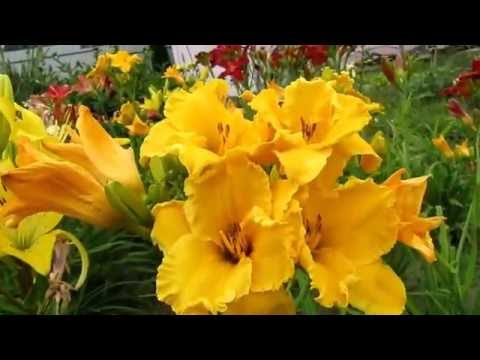

Watch this video on YouTube
Planting a daylily in open ground
What time to plant
Such flowers are planted in spring, summer and autumn, the exact time of planting directly depends on the climate in your region. In the event that winter in the region begins rapidly and very early, then the daylilies planted in autumn may not have time to adapt to new conditions before frost, because they take about 4 weeks to root. However, in the event that garden forms were chosen for planting, in which the flowering period is medium or early, then in mid-latitudes they can quickly take root and prepare for winter. You can also protect the plants from freezing by sprinkling the area with a layer of mulch.
Experienced gardeners recommend planting a daylily in the open ground in the middle lane in May or August. It is also necessary to divide or transplant in spring time or at the end of summer.
How to plant
Before proceeding with the planting of planting material purchased at the store, it must be immersed in water or in mineral fertilizer, which must be strongly diluted, for several hours. From this, the roots will become swollen and come to life, in which case you can easily select unhealthy roots and carefully remove them. The remaining roots must be shortened to a length of 20 to 30 centimeters.
For each bush or delenka, a separate planting hole should be prepared, the depth of which should be about 0.3 m. Also remember that this flower in one place will grow long enough, and during this time it will grow in diameter up to 0.5-0, 7 m, so try to leave such a distance between the bushes so that they are not crowded. A soil mixture consisting of peat, sand and humus must be poured into each of the prepared holes, then add phosphorus-potassium fertilizer or wood ash mixed with superphosphate. Then the plant's root system must be placed in the hole and carefully straightened, while making sure that there is no empty space under it. After that, fill the hole with soil, but not to the top. Then, holding the bush with your hand, tamp the soil well and pour enough water into the hole so that it is full. In the event that the liquid is quickly absorbed into the soil, then this means that the earth is poorly compacted, so pour dry soil into the hole and compact it well again. Then you need to fill the hole to the brim with soil. When planting, make sure that the root collar of the flower is not more than 20-30 mm deep into the ground, otherwise growth retardation and the appearance of rot may occur. If you planted a daylily, observing all the rules, then there should be enough water in the holes for the bush for complete rooting.
Transfer
You can grow such a flower in the same place for about 15 years, but over time, the quality of flowering will deteriorate. If you see that your previously luxurious and already middle-aged bush has become less effective (the flowers have been crushed, and there are fewer of them on the peduncle), then this means that it is time for a transplant.To begin with, dig in a bush along its outer border and carefully remove it along with an earthen lump, while trying not to injure the roots. The root system must be rinsed out with a garden hose and then carefully divided into individual fans. If you have certain skills, then you can divide the bush with your hands, but if you use a knife or pruner, then the cut points must be treated with a fungicide. It is recommended to plant and transplant on a cloudy day, but if you have to wait long enough for the right weather, then it is recommended to dig the bushes or delenki in the sand, they can stay there for about half a month. Before planting a specimen, you need to shorten the roots, and you should also cut off all dead and rotten ones. Then trim the leaves to a height of 15–20 centimeters in the shape of an inverted V. Place the prepared cut in a permanent place.
Daylily care in the garden
Daylilies are very beautiful and do not require any special care. For example, they don't need frequent watering. It is recommended to carry out such a procedure only during a prolonged drought, while a large amount of water must be poured under each bush so that the soil is well saturated with it. It is necessary to water the daylily in the evening. The number of dressings directly depends on whether the soil is nutritious or not, in this regard, the gardener must independently calculate how many times he will have to fertilize, but at the same time remember that such flowers cannot be overfeeded. However, it should be borne in mind that 2 dressings are required. For the first time, you need to feed the flowers in the spring after the leaves begin to grow, for this they use mineral fertilizer. Dry granules must be distributed over the surface of the site, and then embedded in the ground using a rake, then the earth must be watered. The second time, it is imperative to feed the plant in August 4 weeks after the peak of flowering. This will help make future flowering more magnificent, since it is at this time that the buds are laid. Experienced gardeners recommend using Kemiru-plus for top dressing. The main thing to remember is that the fertilized soil must be watered.
Mulching the site is also very important for the daylily. This will help avoid soil compaction over the root collar. The central part of the bush should be covered with a three-centimeter layer of mulch, using coarse river sand for this. In the event that the soil is poor, then it is recommended to use compost or peat as mulch, which is sprinkled with aisles, and for nutrient soil it is better to choose tree bark or needles. The soil is mulched in order to protect the plant from sudden temperature changes, to retain moisture and to reduce the amount of weeding. The thickness of the mulch layer should be about 6-7 centimeters. In the event that the soil is not mulched, you will have to regularly loosen its surface and remove weeds. Also, do not forget to promptly cut off the flowers that have begun to fade.
Daylily propagation
Do not forget to divide the bushes during transplanting in August. This breeding method is described in more detail above. Seeds can also be used for reproduction, but such plants are not able to maintain parental traits. In this regard, daylilies are grown from seeds mainly by breeders. Also, the daylily can be propagated in another way, while you do not have to dig out the main bush. However, this method is only suitable for plants with loose bushes. After the bush turns 3 or 4 years old, it will be possible to separate the daughter outlet with a fully formed root system. To do this, take a very sharp shovel and place it in the place of the future cut, placing it strictly vertically.Then press the shovel sharply with your foot, which will cut off the necessary part, which must also be cut from the bottom and pulled out of the soil. Places of cuts and damage will need to be sprinkled with crushed coal or wood ash. The daylily can be propagated in this way in the spring (when the leaves are just starting to grow) or in the fall (when the leaves are cut off).


Watch this video on YouTube
Diseases and pests
Such plants are quite resistant to various diseases and harmful insects, but still sometimes problems arise with them. Of the harmful insects, the greatest danger to the daylily is represented by lily mosquitoes, slugs, daylily thrips and water voles.
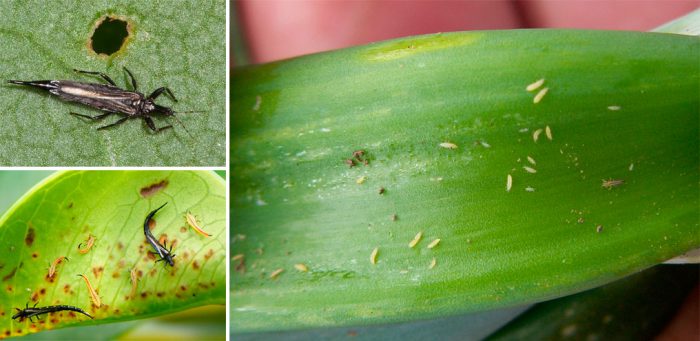

Thrips able to penetrate the daylily from the soil at a temperature of about 10-12 degrees. They feed on plant sap, sucking it out of flowers, leaf plates and stems, while the deformation of the flowers occurs already in the buds. In the event that you see that the plant is affected by such pests, then the bush should be destroyed, after digging it up. Take preventive measures. To do this, you need to spray the soil around the flowers with insecticides in the spring and autumn, while making sure that there are no plant debris on the site, which may contain pests.
Lily mosquito... These insects produce buds of larvae. The grown larvae feed on flowers, which is why they are deformed. To get rid of such pests, it is enough just to pick all the affected flowers and destroy them.
Water voles... They prefer to eat not only daylily roots. The problem is that once every 3 or 4 years there is a sharp increase in the number of these rodents, and at this time they eat the bulbs of tulips and lilies, as well as the roots of young apple trees and daylilies. It is impossible to destroy such pests, but they must be dealt with in suitable ways.
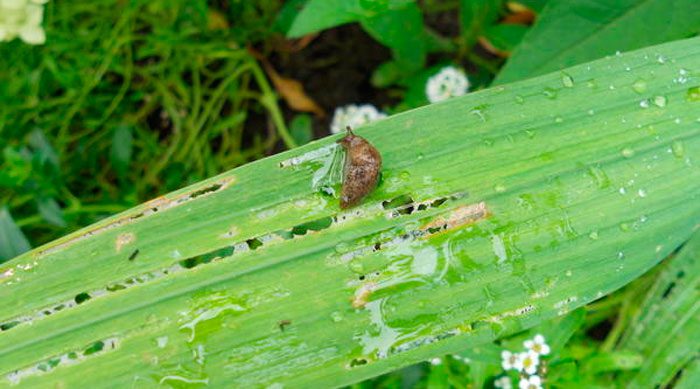

Slugs... They can be removed from the plant manually or treated with the "Thunderstorm" tool.
Of the diseases, daylily is most susceptible to rust, fusarium and root rot.
Root rot... It appears most often in springtime. In the affected bush, the growth of young foliage stops, it turns yellow and is easily pulled out of the soil. Dig up the diseased bush and remove all rotten areas, and then rinse it in a solution of pink potassium manganese. The wounds must be treated with a fungicide. The root system should dry well and will take 2 days. Then the bush must be planted in another place. Such a plant will not bloom for a couple of years. Where the affected bush grew, it is not recommended to plant a daylily for at least 12 months.
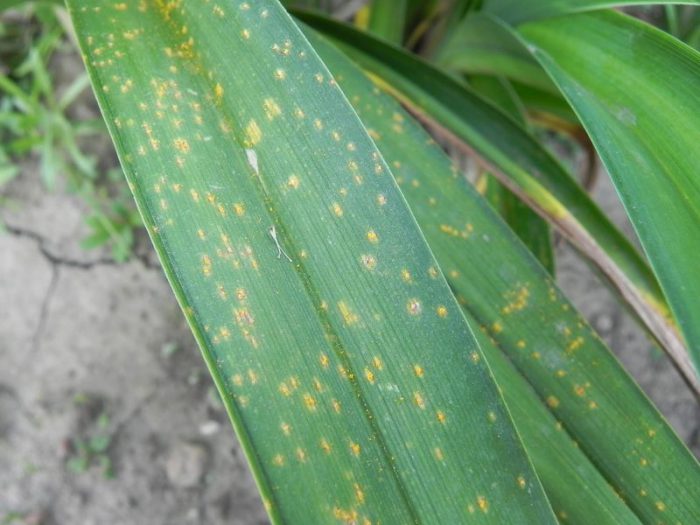

Rust... This disease manifests itself only in those daylilies that are grown in the immediate vicinity of patrinia. As a preventive measure, spray generously with a fungicide.
Fusarium... Infected bushes look stunted, their leaves quickly turn yellow and wither, and the roots are more like dust. This disease is fungal, and at the initial stage it can be eliminated with a fungicide. A heavily affected bush must be destroyed, and the soil where it was grown, as well as the plants located in the neighborhood, must be treated with a foundation. Prevention:
- sterilization of garden tools;
- adding Fitosporin-M to water for irrigation;
- loosening the soil surface after watering.
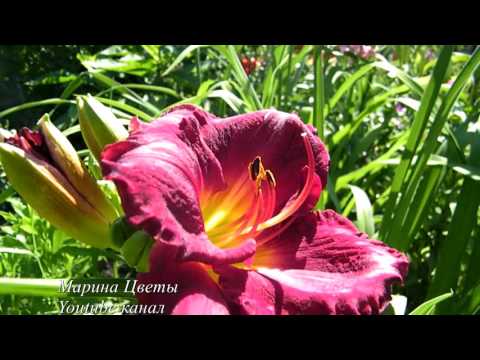

Watch this video on YouTube
Daylilies after flowering
Daylilies are classified as deciduous (dormant), semi-evergreen, and evergreen.
Sleepers (Dormant)
In autumn, the leaf plates turn yellow and wither. The flower is dormant until the onset of spring.
Evergreen
In the middle latitudes, it has a dormant period that lasts 15–20 days.
Semievergreen
If the climate in the region is mild, then they are more similar in behavior to evergreens, and in areas with frosty winters, its leaves turn yellow, but they do not stop growing completely.
In deciduous plants, it is recommended to cut off the aerial part before winter, while the length of the remaining foliage should be about 15–20 centimeters. They do not need shelter, as they are frost-resistant. But in the northern and eastern regions of Russia, semi-evergreen and evergreen species most often freeze out during a winter with little snow, especially if the air temperature drops below minus 20 degrees. In this regard, in the fall, it is better to take care of the shelter of such daylilies, as well as recently planted bushes. You can cover it with spruce branches, sawdust, dried foliage or straw. At the very beginning of spring, the shelter must be removed, since such flowers wake up quite early.

